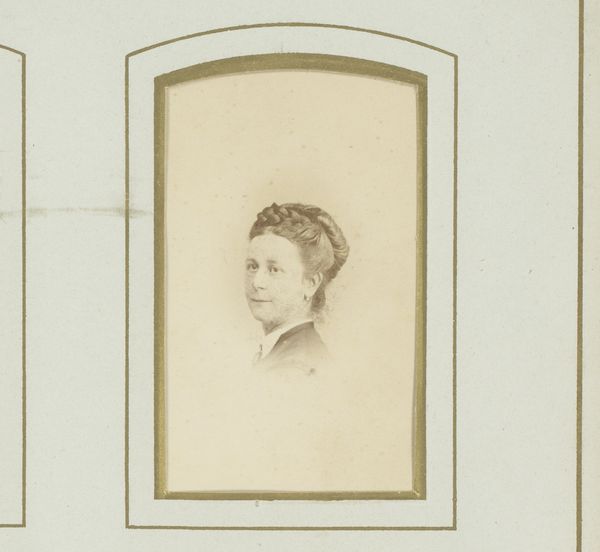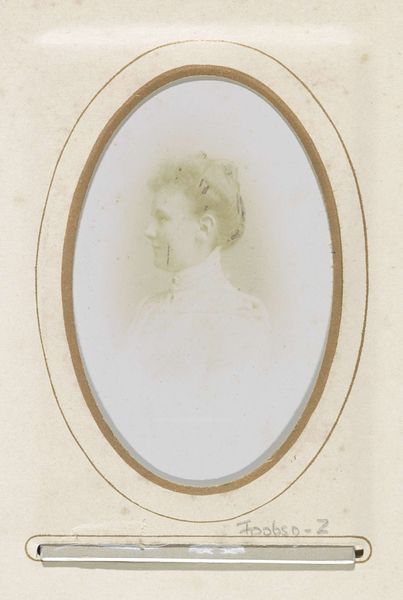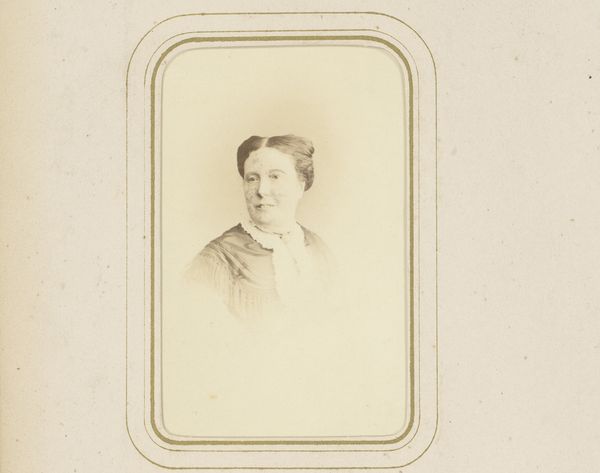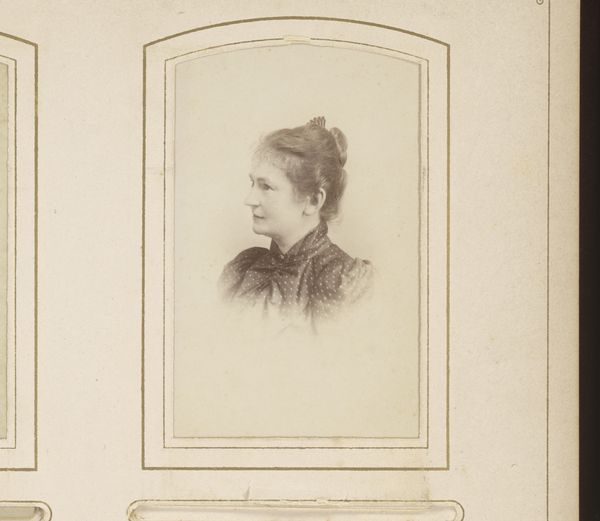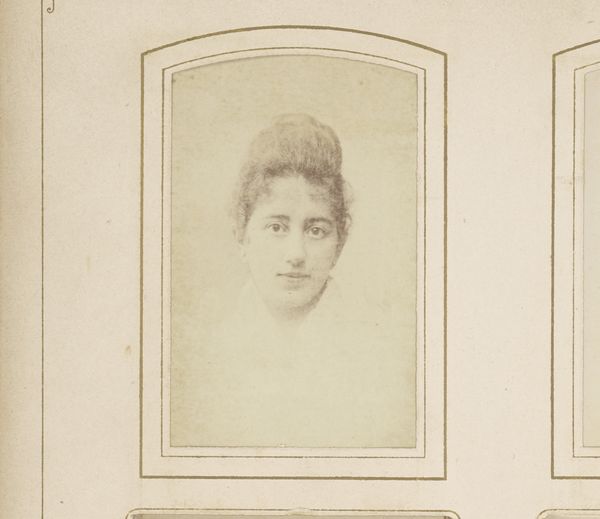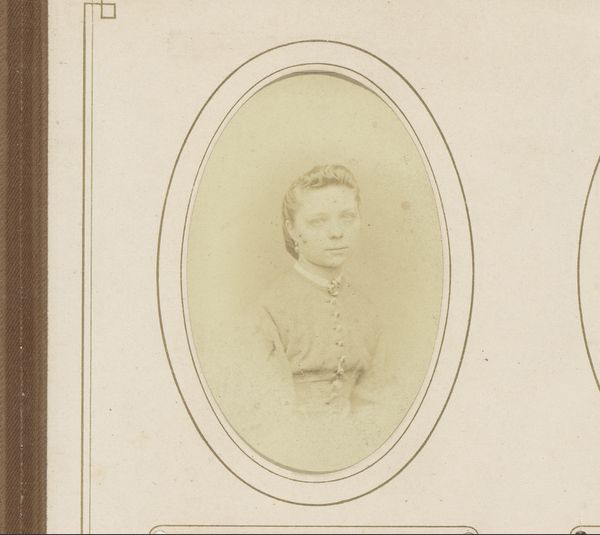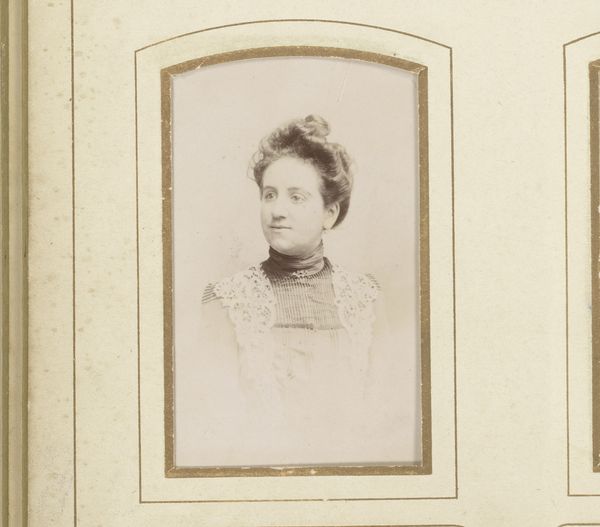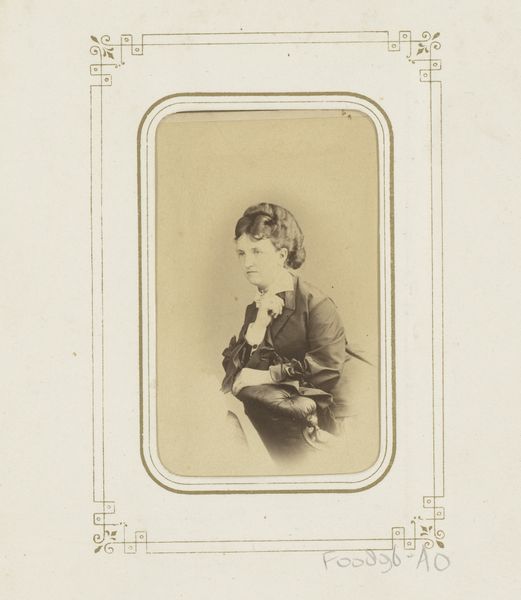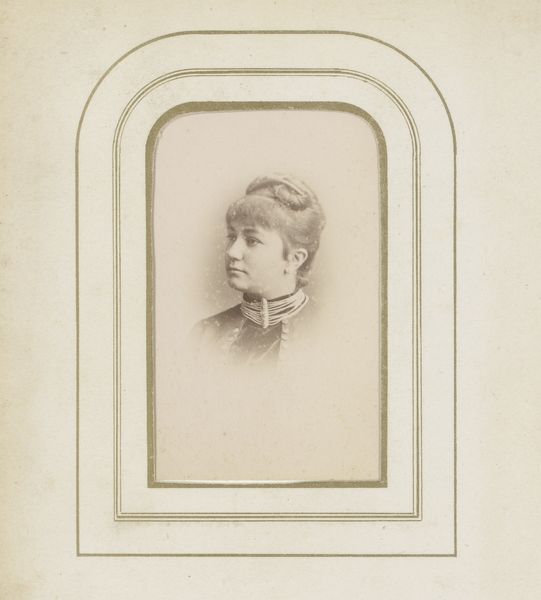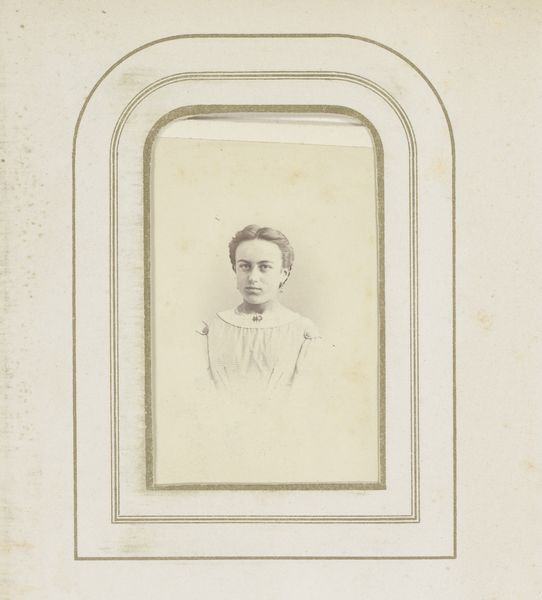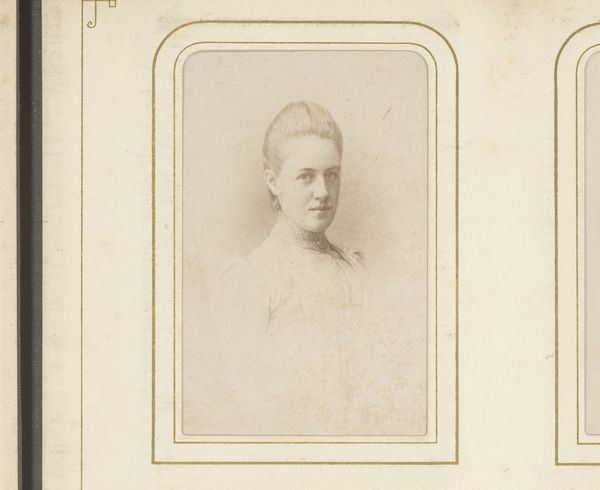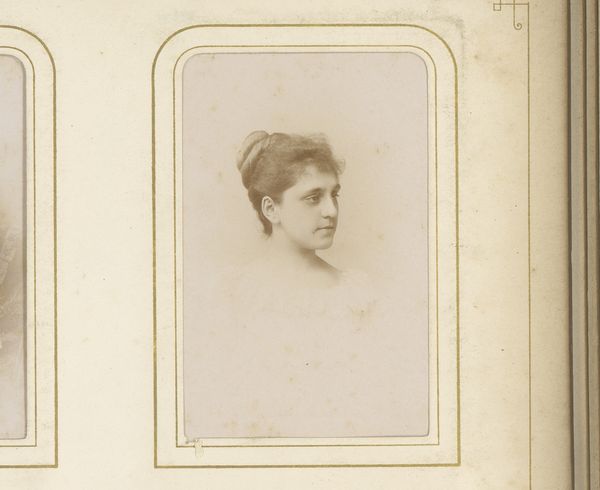
photography
#
portrait
#
figuration
#
photography
Dimensions: height 83 mm, width 52 mm
Copyright: Rijks Museum: Open Domain
Curator: Adrianus van der Grient offers us this delicate, sepia-toned photograph, "Portret van een jonge vrouw," created sometime between 1888 and 1907. Editor: The gentleness is immediate. The soft focus lends her a slightly ethereal, almost dreamlike quality, even though it is clearly a studio portrait. It evokes a Victorian-era mood. Curator: Indeed. The stylistic elements, from the sitter's elaborate hairstyle to her high-necked dress with a cameo, root it firmly in the late 19th century. It calls forth ideals of beauty from this time, echoing symbolic portrayals of womanhood we also observe across painting and literature. Editor: What’s also striking is her direct gaze, averted but somehow forthright. There is an intriguing psychological tension, as if the photograph has captured something about her character that is rarely seen or portrayed. Is she uncomfortable in the role? Or, in fact, self-aware, making a deliberate point? Curator: Perhaps. We see such gestures mirrored throughout history. While clearly posed within the aesthetic norms of the time, her expression also feels individualized, maybe resisting the collective archetypes assigned to women, consciously or not. Editor: I keep thinking about how photography offered a then-new way of documenting people, often from marginalized backgrounds. Though this feels upper-class, what commentary might exist about class and status, regarding how gendered identities were shaped in the Belle Epoque? Curator: Precisely. Early portrait photography, unlike painting, could democratize image-making in some ways, even as it replicated dominant narratives. This "Portret van een jonge vrouw" reflects a society in flux, exploring the performativity of femininity amidst emergent social dynamics. The fact that such symbols still resonate, however, tells us a great deal about social roles. Editor: Looking at the faded tones and paper texture adds another layer of temporal meaning too, reminding us of how visual histories both change and endure. The material history speaks to generational shifts that are embodied through her quiet presence, and yet the composition is strikingly timeless, capturing a transient moment of being. Curator: It seems even across different methodologies and intentions, photography and figuration act as echoes to cultural values as well as subtle dissent from those values. Thank you for illuminating the complex layers of history with me! Editor: And thank you, too. It is always remarkable what emerges when engaging historical dialogues from diverse viewpoints.
Comments
No comments
Be the first to comment and join the conversation on the ultimate creative platform.
